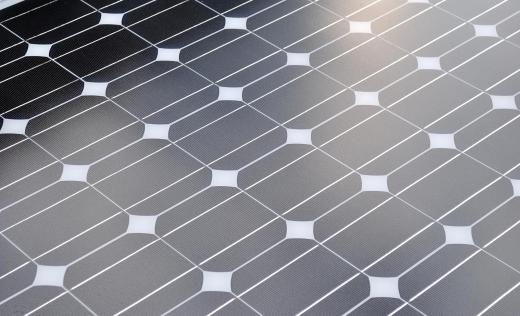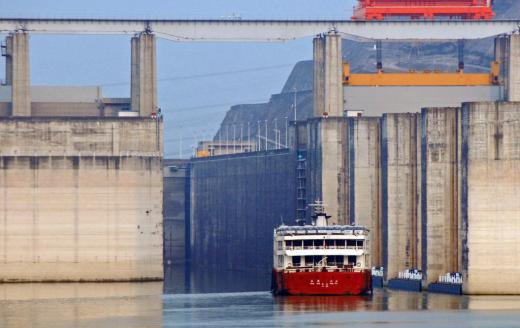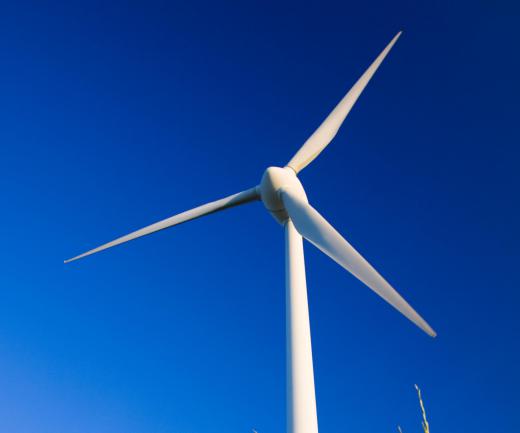What Are the Different Types of Natural Energy?
 Jessica Ellis
Jessica Ellis
Natural energy is energy derived from natural sources, such as the sun, wind, water, and even the Earth itself. Many natural energy sources are clean and renewable, but not all of them. One of the most polluting forms of human-used energy, fossil fuel, is derived from natural sources. In the 21st century, scientists and concerned people around the globe are heavily focused on shifting energy consumption from polluting sources of natural energy to clean-burning, sustainable forms, such as solar power.
Solar power can be created in two ways. Solar panels absorb sunlight, causing the light waves to interact with electrons in the solar panel and create an electrical current. Solar power can also be used to heat things; by attaching a solar heat collector to pipes with water circulating through, the heat from the sun will transfer to the water. Solar energy is natural, renewable and clean, meaning it does little or no harm to the environment. It is considered by many scientific experts to be an important part of the change to clean, renewable natural energy.

Wind and hydroelectric power sources both use natural forces to create energy. By placing wind turbines or windmills in consistently breezy areas, the wind forces the turbines to spin, generating an electric current. Hydroelectric power often uses the massive energy of falling water by creating a dam system where water falls from a higher elevation into a lower, passing through energy-creating turbines on the way. Both wind and hydroelectric power are very clean sources of energy, although some worry that water conservation may be a concern with hydroelectric resources.

Energy sources like the sun, wind, and water are all considered to be modern alternatives to fossil fuels. Since the 19th century, humans have relied on fossil fuels like coal, gas, and oil, to power their homes, light lamps, run engines, and fly planes. Unfortunately, fossil fuels are a very slow-renewing resource and very bad for the environment when burned.

Fossil fuels are created by the breakdown of organic plant and animal matter buried under rock and soil. The process of creating fossil fuel is extremely slow; some experts estimate it takes about 300 million years to break down organisms into usable fuel. As a result of human use, the Earth is running out of fossil fuels very quickly. In addition, when burned, fossil fuels release carbon dioxide, nitrogen dioxide, and other harmful chemicals into the environment, increasing greenhouse gas levels and leading, many scientists believe, to global warming.

Natural energy that is renewable and clean allows humans to fulfill energy needs without harming the environment. Since the 1970s, science, government, and citizens have become increasingly more aware of the need to shift research and development efforts to inventing and perfecting renewable energy systems. By switching over to renewable and safe natural energy, many hope to reverse environmental damage over time and instill environmental values in future generations.
AS FEATURED ON:
AS FEATURED ON:















Discussion Comments
@Babalaas-It is true that the wind would not blow without the sun. I can give you a basic explanation of how it all works. The sun shines down on the earth. Some regions of the earth absorb more heat than others for reasons that vary. These reasons include things like the amount of albedo in an area (reflective surfaces), the angle of the earth from the sun, etc.
In the tropics, the sun provides a lot of heat, warming the air. North and south of the tropics, the sun warms the atmosphere less. The warm air tends to rise, causing a void that denser cold air rushes in to fill. This convection, or circulation of air of different temperatures, happens on both large and small scales. It also occurs between bodies of water and landmasses.
Someone told me that wind is a result of solar energy, but I do not understand how this works, is this true? How exactly does the sun create wind? I am new to natural renewable energy and I would like to learn how energy sources are related.
Post your comments